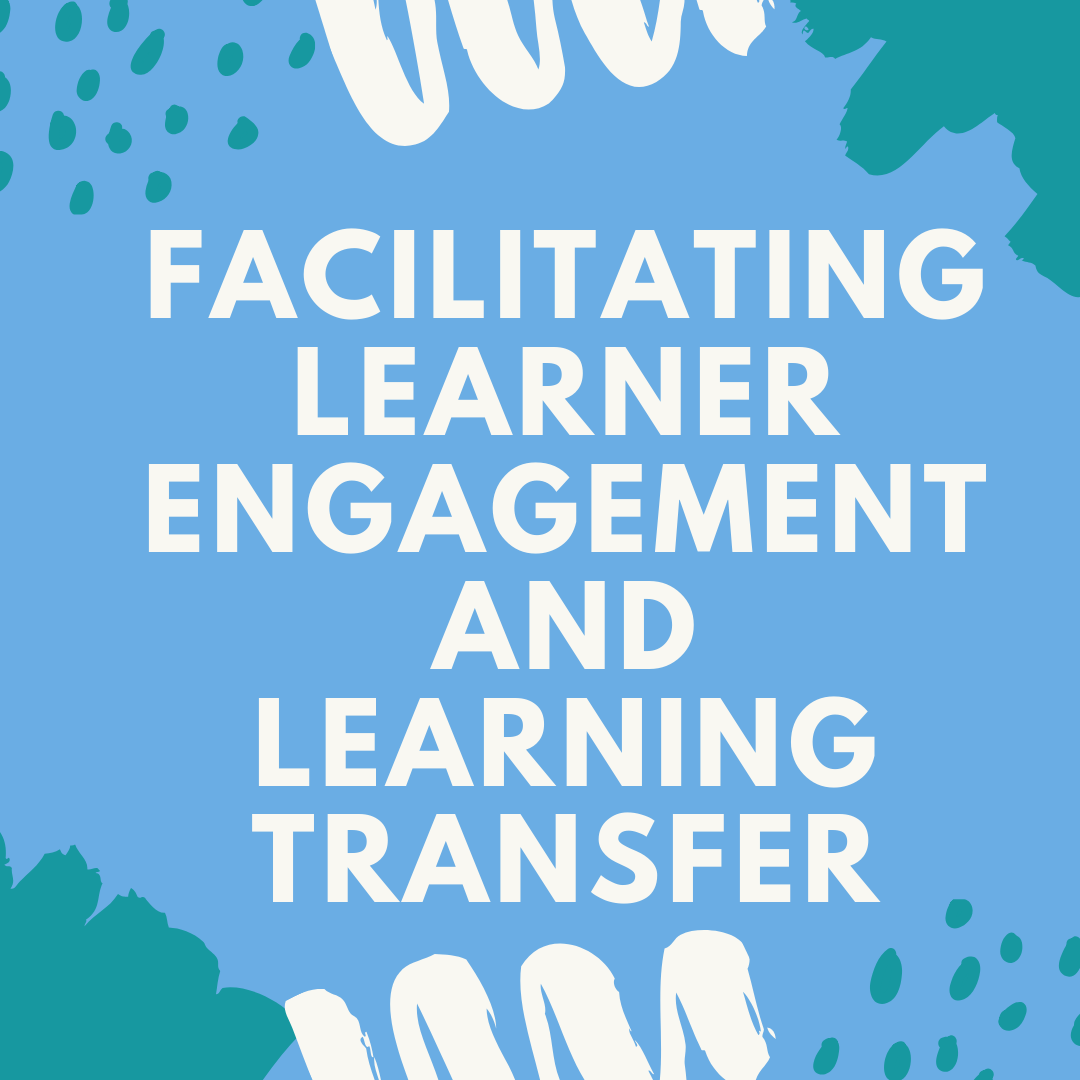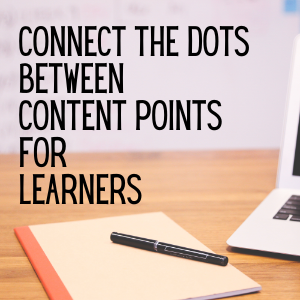What is Facilitation?
What is Facilitation? Facilitation isn’t just a skill—it’s a game-changer for creating learner-driven experiences that leave an impact. But what...
5 min read
 Jennifer Lindsay-Finan
:
Jan 18, 2023 8:41:07 AM
Jennifer Lindsay-Finan
:
Jan 18, 2023 8:41:07 AM

The Virtual Facilitator is often seen as the ‘face’ of the virtual instructional team. They’re the person out in front, working with the learners, teaching the content. But why do we call them facilitators, rather than teachers, trainers or something else? The word facilitator, according to the Oxford English Dictionary means “a person or thing that makes an action or process easy or easier”. So really, that’s the job of our facilitators – to make the learning easier. Carl Rogers said, “We cannot teach another person directly; we can only facilitate his learning”. In short, they create environments in which learner engagement is high and learning transfer is possible. That's a tall order, especially in our quickly evolving training landscape.
A Virtual Facilitator can be defined as the leader and lesson guide, who instead of lecturing, facilitates learning by providing an environment that allows learners to take responsibility for their own learning. Karen Vieth, VP of Services at InSync, says “To make modern learning work, the facilitator needs to be a trainer, coach, and a mentor”. [Download this infographic for a handy visual of the role.]
As Trainer, the Facilitator helps the learner obtain new knowledge and develop skills. As a Coach, they help learners find their own ways to apply the new knowledge and practice new skills. As a Mentor, they guide the learner towards mastery of the subject. During any virtual learning program, facilitators will adopt all three of these roles, moving in and out of each role as required to transfer the learning to each learner in the group.
Often, we meet people who are experienced trainers, highly experienced in passing content on to their learners. But they know there’s more they can do to create truly engaging learning experiences that consist of more than that, they’re just not sure how to do that in the virtual classroom.
Effective virtual facilitators work with the content provided by virtual designers to create relevant, engaging learning experiences for their learners. To do that, they must understand the learner intent and the design intent and how the two fit together. They need to take the instructional content and guide learners through it, ensuring learner engagement throughout so that the learner can take the new knowledge and apply it. This means more than adding in some interaction. This means ensuring there are opportunities for collaboration, practice and application.
During the virtual learning program, the facilitator will work closely with the producer to ensure the technology will support the learning (not distract from it) and that all the logistical needs are met. The facilitator will have done everything they can before the class to minimize the chance of any technology mishaps and will have plans in place to manage any that do crop up.
The facilitator will also work in between the live lessons to ensure that the learners are supported throughout the whole blend. Sometimes this involves participating in forum discussions, evaluating assignments or working with managers to support the application of skills and knowledge on the job.
This partnership approach between designer, facilitator and producer ensures that learners are engaged – emotionally, intellectually and environmentally – throughout the entire program, not just in the live classes.
Nurture and maintain an emotionally safe, enjoyable experience for all. The virtual facilitator does this by providing opportunities for learners to contribute often, by asking questions, encouraging responses and listening to comment appropriately. They ensure learners feel that they can not only ask questions, share experiences and learn out loud throughout the program, but that they want to.
Stimulate intellectually relevant conversations and connecting the content to real world situations. Again, this is all about the facilitator providing opportunities for learners to see how the content connects to their work and their experiences to help learners ‘join the dots’. To do this, the facilitator needs to provide opportunities for the learner to practice and apply the content to ensure that the learning objectives are met.
Fostering an environment where people CAN, and WANT TO, learn. Facilitators need to work with Producers to ensure learners understand how they can contribute successfully in the learning environment. If that environment is a virtual classroom, learners need to know how to use chat and reactions and annotations. If that environment is on a shared computer because they’re joining from a meeting room with other people as part of a hybrid group, they need to know how they can contribute too. It’s also about using their advanced facilitation skills to encourage learners to foster a learning community, supporting each other as they develop their skills.
Ensuring that anyone who wants to participate CAN participate. One of the biggest challenges virtual facilitators are facing now is the growing demand for hybrid training where some people are joining virtually and some are meeting together and joining from one device. That, mixed with more and more learners joining from mobile devices means facilitators need to know their technology and need to be able to make accommodations (often in the moment) for those who don’t have access to the same tools as other learners.
Making each moment count. Time management has always been a challenge for facilitators – both in traditional classrooms and virtual ones. Virtual programs are often shorter, making timing even more important and virtual facilitators need to know how to move things along to ensure the key learning objectives are met, without skimping on interaction or opportunities for collaboration or practice.
Building strong relationships. Another challenge we often hear from virtual facilitators is how to build deep, strong relationships with their learners when the opportunities for impromptu 1:1 conversations during break times is reduced in the virtual environment. Virtual Facilitators need to be able to build relationships without side conversations or body language.
Seeing those a-ha moments. Without doubt, the greatest reward for virtual facilitators is seeing the ‘penny drop’ or the ‘lightbulb moment’ when it happens. Seeing comments in chat such as ‘I can’t wait to try that’ or ‘wow – I didn’t know that!’ are so affirming. Seeing learners master a topic when they share their breakout group’s ideas with the rest of the class, or seeing the correct answers pop up in a poll or on a whiteboard are truly the best reward a virtual facilitator could get.
Working with, and learning from, global groups. One of the perks exclusive to virtual facilitators is being able to work with learners from all over the world – without the jet lag. Imagine being able to hear perspectives from people in China, India, Europe and America all at the same time! Imagine being able to give them the opportunity to collaborate and learn together at the same time. All the while learning a little about the different countries and cultures too. That’s an everyday occurrence for virtual facilitators.
Endless learning opportunities. With new learning platforms appearing all the time and with updates and new features being made available almost every day, there’s always something for virtual facilitators to learn themselves!
In the future, as virtual learning becomes the norm for even more organizations and learners, they’ll simply want more. More engagement – not just interaction, but real collaboration and engagement throughout the entire learning program, no matter where the learners are joining from. Virtual Facilitators will need to draw on their advanced virtual facilitation skills to ensure more learner engagement in all learning programs.
With more pressure to meet budgetary constraints, facilitators will need to stimulate more intellectual engagement. To do this, they’ll need to provide more context, more opportunities for application and practice and more evidence of the transfer of learning.
With more hybrid working leading to learners joining from a wider variety of devices and locations, facilitators will need to foster even more environmental engagement. This will mean ensuring no learner is ever left behind regardless of whether they are joining from a hybrid environment, a mobile device or a different global culture.
With more hybrid working leading to people working in isolation, facilitators will need to nurture more emotional engagement. They’ll need to work on creating even safer, more enjoyable learning experiences with more opportunities for connection and a real sense of community.
For Learning & Development teams to be successful, we must ensure that the individuals primarily responsible for interacting with our learner audience masters of this quickly evolving learning environment.
To become a Master Virtual Classroom Facilitator, learn to go beyond interactive virtual classes and facilitate collaborative, engaging blended experiences that nurture emotional engagement, stimulate learners intellectually and foster environmental engagement no matter what that environment is. Learn by immersing yourself in the best practice and take advantage of all the opportunities for hands-on practice in our Virtual Classroom Facilitation Mastery Series.

What is Facilitation? Facilitation isn’t just a skill—it’s a game-changer for creating learner-driven experiences that leave an impact. But what...

We all know that organizations have had to quickly move face-to-face training to the virtual classroom. This seismic shift extends beyond...